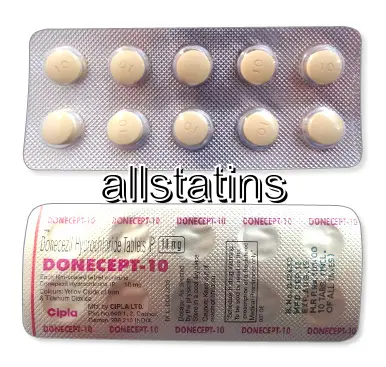| Package | Dosage | Price | Price per Dose | |
|---|---|---|---|---|
| Dosage: 5mg | ||||
| 360 pill | 5mg | $516.65 | $1.44 | |
| 180 pill | 5mg | $270.88 | $1.51 | |
| 120 pill | 5mg | $193.73 | $1.61 | |
| 90 pill | 5mg | $156.06 | $1.74 | |
| 60 pill | 5mg | $114.80 | $1.90 | |
| 30 pill | 5mg | $66.36 | $2.22 | |
| Dosage: 10mg | ||||
| 120 pill | 10mg | $245.76 | $2.05 | |
| 90 pill | 10mg | $200.91 | $2.22 | |
| 60 pill | 10mg | $147.09 | $2.46 | |
| 30 pill | 10mg | $87.89 | $2.94 | |

Donepezil Description
Overview of Donepezil
Donepezil is a widely prescribed medication primarily used to manage symptoms of Alzheimer’s disease. It belongs to a class of drugs known as cholinesterase inhibitors, which work by enhancing communication between nerve cells in the brain. This medication is known for its ability to temporarily improve cognition, memory, and overall mental function in patients experiencing mild to moderate stages of dementia. It is available in various dosages, typically in tablet form, making it convenient for daily administration.
Mechanism of Action
Donepezil works by inhibiting the enzyme acetylcholinesterase. This enzyme breaks down acetylcholine, a neurotransmitter essential for learning and memory. By preventing its breakdown, donepezil increases the levels of acetylcholine in the brain. This enhanced neurotransmitter activity helps improve communication between nerve cells affected by Alzheimer’s disease. While it does not cure the disease, it can slow the progression of symptoms and improve quality of life for many patients.
Effectiveness and Benefits
Many patients experience noticeable improvements in cognitive functions after starting donepezil therapy. These may include better concentration, improved memory, and a general sense of mental clarity. Additionally, some patients report an increase in daily activity levels and social interactions. The benefits often depend on the severity of Alzheimer’s and individual response to the medication. It is important to note that while donepezil can help manage symptoms, it does not halt or reverse the underlying disease process.
Usage and Dosage
Donepezil is typically prescribed once daily, with or without food. The starting dose is often 5 mg, which may be increased to 10 mg after a period of time, based on patient response and tolerability. Healthcare providers usually recommend gradual dose adjustments to minimize side effects. Regular medical assessment is essential during treatment to monitor efficacy and manage any adverse reactions.
Possible Side Effects
As with many medications, donepezil may cause side effects. Common issues include nausea, diarrhea, insomnia, fatigue, and muscle cramps. Some users may also experience more serious effects such as bradycardia (slow heart rate), gastrointestinal bleeding, or allergic reactions. It is essential to communicate any unusual symptoms to a healthcare professional promptly. Adjustments in dosage or discontinuation of the medication might be necessary to ensure safety and comfort.
Precautions and Interactions
Before starting donepezil, patients should inform their healthcare providers about any existing medical conditions, especially liver or heart problems, or if they are taking other medications. Donepezil can interact with drugs such as anticholinergics, which may diminish its effectiveness. It is also crucial to use this medication with caution in patients with a history of ulcers or gastrointestinal bleeding. Pregnant women and breastfeeding mothers should consult their physicians before use.
Dependability and Availability
Donepezil is a trusted medication prescribed by many neurologists and geriatric specialists worldwide. It is available through pharmacies and healthcare providers, ensuring that patients can access it with a valid prescription. Due to its extensive clinical use, donepezil has a well-documented safety profile when used appropriately. Consistent medical supervision helps maximize benefits and minimize potential risks during therapy.
Conclusion
Overall, donepezil remains a cornerstone in the symptomatic treatment of Alzheimer’s disease. It offers patients a chance to maintain better cognitive functions and a more engaged daily life. While not a cure, it provides meaningful support in managing the challenging aspects of dementia. Proper use, regular monitoring, and open communication with healthcare providers are key to obtaining the best possible outcome from this medication.
